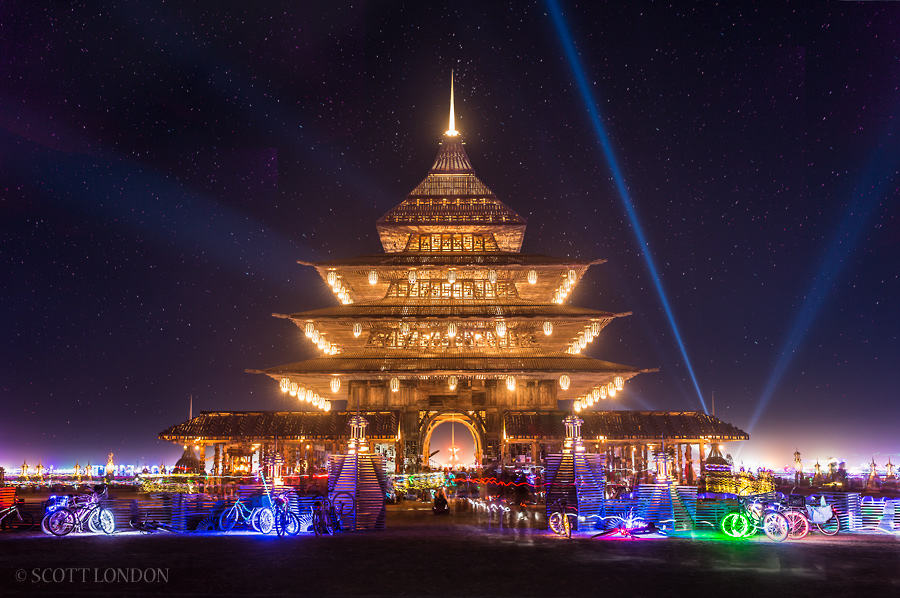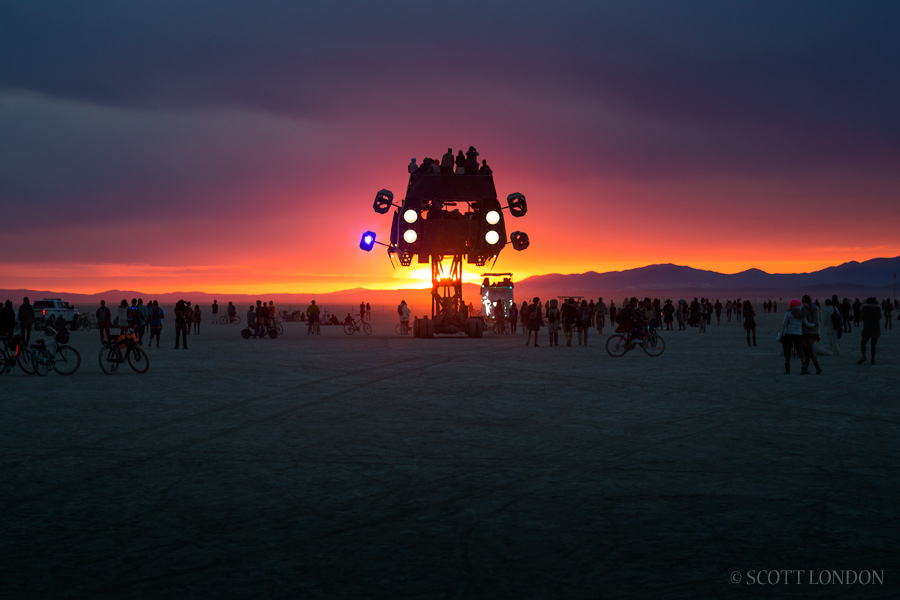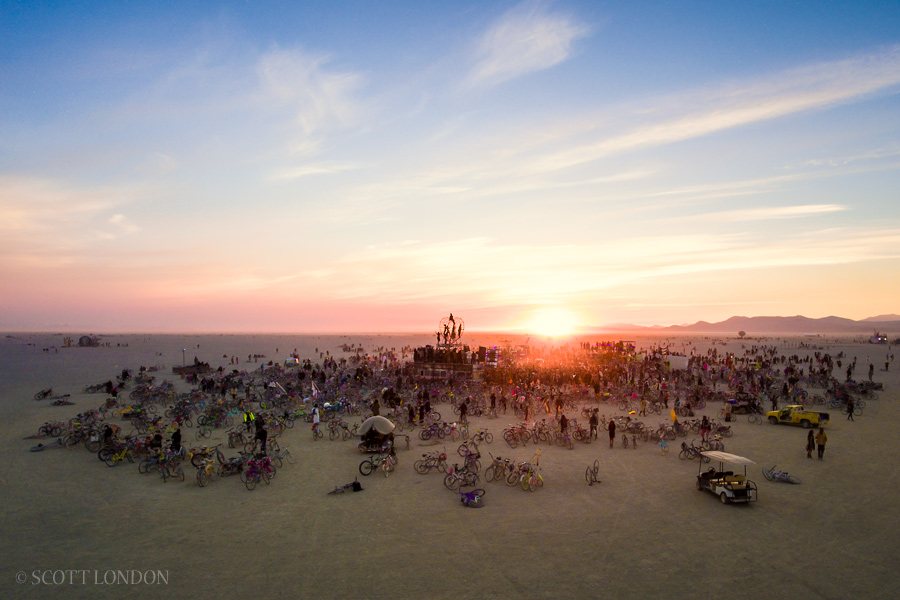Every time someone asks me “what’s your favorite festival?”, the only answer I want to give is plain and simple – Burning Man. But, that would be selling the burn much shorter than for what it really is. While there are certain aspects that could definitely lead someone to believe that Burning Man is some variation, it’s actually so much more than that.
For me, the easiest way to explain Burning Man would be as a social experiment, a temporary metropolis dedicated and ran by a guiding set of principles. The ten principles, which can be found here, are the base for which Burning Man is built upon year after year. It’s also a combination of cultures from all over the world being recognized and celebrated in one centralized place. Because of its nature it’s hard to pinpoint exactly what to call Burning Man, which is why people are so quick to call it a festival, which it isn’t.

Festivals (music, film, etc.) are known for their purely celebratory nature, where the experience is curated by organizers and catered to its attendees. And while celebrating is certainly a common activity on the playa, it’s not the sole purpose of Burning Man. Many who attend experience feelings of retrospection/introspection and grief just as much as they do joy. The burn can mean different things to different people. Some go to celebrate, some go to mourn, and some go to do both. It truly is a transformational experience in that the profound emotions you feel in yourself and those around you can affect you long after you leave the playa. Two of the most emotionally intense experiences that happen at Burning Man are at the end of the week, the very well-known man burn, and the lesser known but just as important temple burn. The man burn, which happens on Saturday night is a time for celebration. As the flames engulf the man, fireworks are set off and people scream and jump with excitement. When there’s nothing left but the chilled ash pile of what once was, people leap in to roll around, sleep in, and sometimes even have sex on the ashes. The next day, the last official day of Burning Man, is when the Temple burns. The Temple is the focal point of emotional intensity on the playa. It’s where people gather to mourn and grieve for a number of different reasons, from lost loved ones to past traumas. Many leave a physical embodiment of their grief at the Temple such as a letter, photo, journal, poster, etc. that others can read through out the week. You can feel the emotion as you step inside the Temple – people crying, holding each other, shouting with grief. The impact it can have on you is more powerful than you realize. But when the Temple burns, it symbolizes the release of this sadness, it acts as a sort of closure to anyone grieving, watching the Temple burn away and with it, all traces of their grief and mourning.
At festivals, there’s only so much you can do to influence your environment – but at Burning Man, the sky is the limit. Instead of stepping into someone else’s art, you are creating your own art. Hell, YOU are the art. The variety of experiences that waits for you on the playa is too expansive to fit under a “festival” label. Yes, there’s music and art, but there are also speakers, workshops, arts and crafts, weddings, ceremonial funerals, organic fruit stands, a play-fighting pit known as the Thunderdome, orgy domes (yes, as in multiple), and that’s not even 10% of what awaits you. Festivals are made-to-order experiences where you sit back and enjoy the show. But Burning Man is a whole different matter. Tucker Gumber — more commonly known as the Festival Guy — said it best: “When you buy a ticket to a festival you’re saying ‘here’s my money do everything for me.’ When you buy a ticket to Burning Man you say ‘here’s my money now get out of the way.’”

What’s the harm in calling Burning Man a festival? The most important answer is that the festival label could give a virgin burner the wrong idea of how self-reliant and over-prepared they need to be. Usually small mishaps in the festival universe like bringing the wrong tent or forgetting goggles could mean a world of different at Burning Man. Where festivals have water refills and food vendors, Burning Man enforces radical self-reliance in that you should bring and prepare all of your own food and water for the week. Where festivals have temperate, relatively relaxed weather, Burning Man has intense heat, cold nights, and high winds that result in dust storms known as “whiteouts”, where you can’t see anything farther than 5 feet in front of you (this is where those goggles come in!). Where festivals create your environment for you, Burning Man allows you to create your own.
FEATURED PHOTO BY SCOTT LONDON







